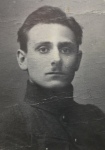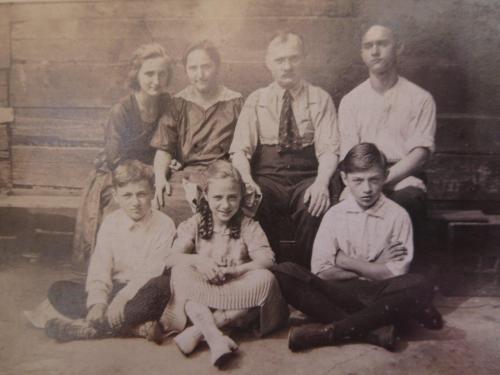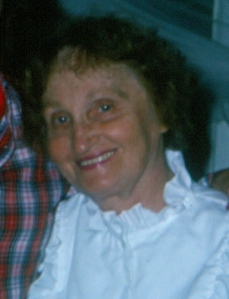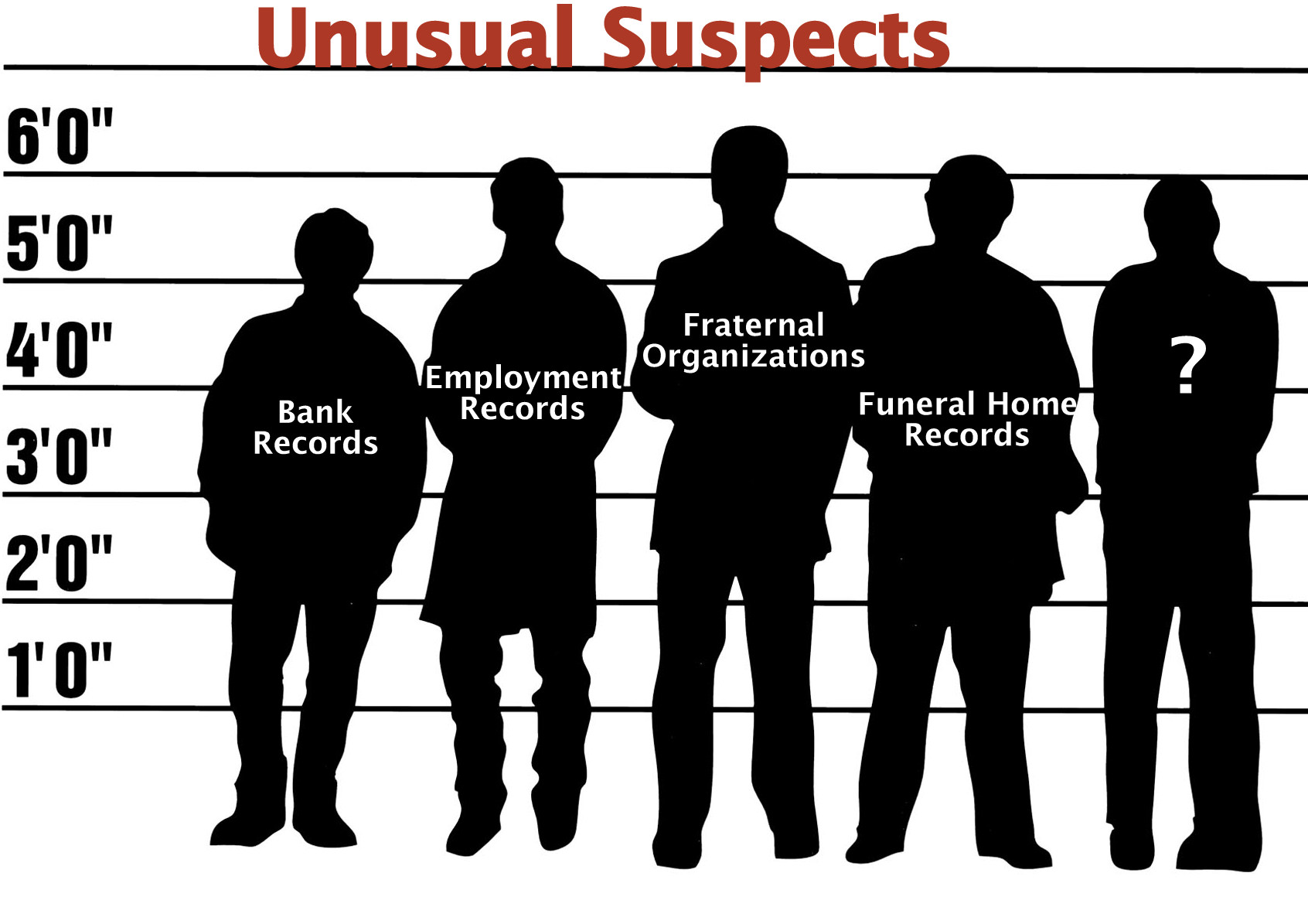In the early days of my genealogical research (early 1990s), I was at an archive or a library and I stumbled upon a database to search for interviews in the Ellis Island Oral History Project. [Note: You can now search the project online, but not all of the interviews are available online. The story I am about to tell is not.] I ran some of my great-grandparents’ surnames through, but did not get any hits. Then I tried the name of the town from which my mother’s paternal grandparents came: Żyrardów. The search resulted in one hit – an interview with Louise Nagy. The name meant nothing to me. Even if it was indexed with her maiden name, Schultz, it still would have meant nothing. Żyrardów was a large town, and she was one of many residents who immigrated to America.
Fast forward about twenty years. I finally discovered my great-grandmother’s family. Elizabeth Pater’s maiden name was Miller, so it was a difficult search. But I discovered that she had several brothers and sisters. One sister, Mary, married a man named Schultz. They had five children: Louise, Edward, Henry, Walter, and Julia. I made contact with Julia’s daughter, who is my mother’s second cousin. She shared many wonderful photographs and provided me with many names and dates that I had not yet researched.
After corresponding by email for a few weeks, she wrote: “You might find this interview of my Aunt Louise interesting. It’s all about when they came over from Poland and landed in New York.” Attached was the transcript of her interview from the Ellis Island Oral History Project! Yes, her aunt – and my cousin – was the same Louise Nagy I had “found” and passed over so many years ago.
In my rush of research on the Miller and Schultz families in the weeks before that email, I had just located the passenger arrival record of the five Schultz children with their uncle, Alfred Miller. They immigrated in 1913 when Alfred was only 17 years old, and he led his nieces and nephews, aged 10, 9, 6, 5, and 3, on the long journey. That 10-year-old was Louise, who would eventually bear the surname Nagy through her second marriage; she is my great-grandmother’s niece. Now, thanks to an interview that took place in 1985 with the former 10-year-old, I was able to learn not only about the journey to America, but also about life in Żyrardów and living with her Miller grandparents, my great-great grandparents. There was also a tape recording, though not complete, of the interview, so I could actually hear the 82-year-old remember her trip to America from 72 years earlier.
I would like to share Louise’s story in a 3-part series not only because her story is so interesting, but because it is similar to the story of many of our ancestors who immigrated from Poland and other parts of Europe in the early twentieth century.
Before I jump right to the story of the journey by ship to America, I’d like to put the journey in historical context and describe her family’s situation at the time.
[Note: Ludwik is the Polish form of Louis; Ludwig is the German form. Ludwig Schultz used the German form of the name, while his brothers-in-law with the same first name used the Polish form, Ludwik.]
The Szulc / Schultz and Miller Families
Louise’s parents were Ludwig Schultz (Polish spelling: Szulc) and Mary Miller. Ludwig was born in 1873, possibly in Żyrardów like his wife, Mary, who was born there in 1884. Ludwig became a silversmith. According to the interview with Louise, the family used to travel for her father’s work. The Schultz children were all born in Zhytomyr, Volhynia (present day Ukraine). Their children were: Louise (Ludwika Kazmiera), born in 1903; Edward, born in 1904; Henry, born in 1906; Walter (Władysław), born in 1908; and Julianna (Julia), born in 1909.

The Schultz Family and Alfred Miller in 1910
By 1912, the family moved to Żyrardów, which is where Mary Miller Schultz was born and her parents and family still lived.
Mary’s parents were Jan Miller, born in 1849, and Elżbieta Smetana, born in 1858. Both were born in the town of Zelów, a town founded by a community of Protestant Czechs whose ancestors had lived in Poland for over 100 years to escape persecution in their homeland. In the late 1870s, several families from Zelów, including the Miller’s and Smetana’s, moved to Żyrardów for better prospects. Żyrardów was thriving thanks to the town’s linen factory, a major producer of linen for the Russian Empire.
Jan and Elżbieta likely married in Żyrardów around 1880. They had eight children (who survived to adulthood):
- Emil, born 22 December 1881, married Zofja Jelinek in 1902; immigrated to Philadelphia, PA in 1904; returned to Poland after 1913.
- Marya (Mary), born 24 March 1884. Mary married Ludwig Szulc; their children are the subject of this series of posts.
- Karolina, born 12 March 1886, married Julian Razer in 1903; lived in Łódz in 1913.
- Elżbieta (Elizabeth), born on 19 November 1890, immigrated to Philadelphia, PA in 1909; married Ludwik (Louis) Pater in 1910.
- Paweł, born 11 December 1893; lived in Żyrardów.
- Alfred, born 18 April 1896; would immigrate to New York in 1913 with Mary’s children.
- Ludwik, born in 1900; lived in Żyrardów.
- Zofia, born 03 April 1903; lived in Żyrardów, immigrated to U.S. in 1920.
When Mary and Ludwig moved back to Żyrardów in 1912, two of Mary’s siblings had already separately immigrated to America (Philadelphia, PA): brother Emil and sister Elżbieta (my great-grandmother). Another sister, Karolina, was married by this time and possibly living in Łódz with her family. The four younger siblings remained in the Miller household: Paweł, Alfred, Ludwik, and Zofia. Their ages at the time were 19, 16, 12, and 9.
Life Under Russian Rule
What was it like living in Żyrardów in 1912? Although it was a multi-cultural town with Poles, Jews, Germans, and Czechs living together, the town was under Russian rule. According to Louise, “It was hard being that it was under.the Czar’s rule. My father got politically mixed-up and he came home shot in the arm once. After a certain hour in the evening, you were afraid to go out at night.”
In Żyrardów, and likely throughout Poland, people talked about America. Louise remembered everyone talking about America:
“You make out good in America. That’s all you heard: gold on the streets of America. You could be anything you want and make a lot of money, even if it was a dollar a day.”
Those thoughts, according to Louise, are what gave her mother, Mary, the “courage to push.”
It was decided that Ludwig would travel to America first since the family could not afford to all travel together. Louise describes her mother as being the driving force behind the family’s move. “She got him out first,” she said. “She sold things [to pay for the journey], and he wasn’t very daring – she was the pusher. That’s my mother; she was an adventurist.”
Ludwig departed from Hamburg, Germany aboard the S.S. Amerika on May 30, 1912 and he arrived in New York City on June 9th. However, Louise said he
“didn’t make much of an effort to learn English fast enough, and he didn’t know how to look at “The World” – the newspaper was the greatest for people finding jobs, but you had to know under which column to look for what you were going to do. And, he didn’t have anyone to help him too much.”
In New York City, Louise remembered that
“everybody lived in little cliques: the Polish, the Ukrainian, the Russian. So they would help each other out. Maybe one knew a few words more than the other. They used to live maybe ten or twelve people in one room, because one was helping the other to get established.”
But “living with other people” wasn’t for Ludwig. Louise said, “Within six months he wrote to my mother not to get ready to come because he’s coming back.” How did Mary respond to his declaration? According to Louise, she said, “No, you’re not coming back! I’m coming over there.” Mary sold whatever else she had and left her five children with their grandparents.
Mary immigrated in November aboard the Mauretania departing from Liverpool. She arrived in New York City on November 22, 1912. Louise describes what happened once Mary arrived in America: “She was very fast in finding her type of work [sewing machine operator]. And she made money, and she made a definite decision: ‘I’m going to get all of my children here and we’re staying, no matter how bad it is.'”
Meanwhile, back in Poland…
In hopes of improving all of their lives, Mary made the difficult decision to leave her five young children with her parents. Louise, like most 9-year-olds, thought her grandmother “was old, but actually she was not.” [Note: her grandmother was 55 years old at the time.]
Louise explains that her grandparents still “had a family of four [home]: three sons, and a daughter. And then five of us. My parents were sending money, but, you know, it was just barely for food, because they’re trying to save for six people – five of us children and my mother’s younger brother who was our chaperone.”

The Miller Family in 1913 with the Schultz grandchildren. Left: Ludwik Miller, Zofia Miller, (boy in front) Wladyslaw (Walter) Schultz, Elzbieta Miller, Louise (Ludwika) Schultz, Alfred Miller, (girl in front) Julia Schultz, Jan Miller, Pawel Miller, Henry Schultz, Edward Schultz.
In addition to the added responsibility of caring for five young grandchildren, Elżbieta was the sole supporter of the family. Louise explains, “My grandfather was sick; he was in bed. She was very fast, my grandmother. She worked the looms, one on one side and one on the other so she could make enough money.”
Despite being sick in bed, their grandfather, Jan, taught the children a lesson. He told them, “You’re not going to waste all that time just hanging around the house” so he sent them to a German school to learn German. At nine years old, Louise already spoke Polish, Russian, and Ukrainian. When she moved in with her grandparents, they “spoke only Czech” (Czech may have been the language they spoke at home; both were born and raised in Russian-occupied Poland, so it is unlikely that they would not speak those languages as well). Louise learned Czech to speak to them, then German. The reason he wanted them to learn German is that, in Żyrardów, the factory managers were German. Her grandfather’s rationale was that, if you knew German, “you could become a big official someplace; that was important to him.”
Louise was grateful to him “because the German language helped me a lot on the ship traveling, and once I came to this country [America], it made it much easier. Somehow there’s a lot of similarity between German and English.” All of her linguistic experience helped Louise to learn English within “almost three months” after immigrating to America. But, that’s getting ahead of her story.
In Part 2, we will hear about the Schultz children traveling to America with their Uncle Alfred.


























